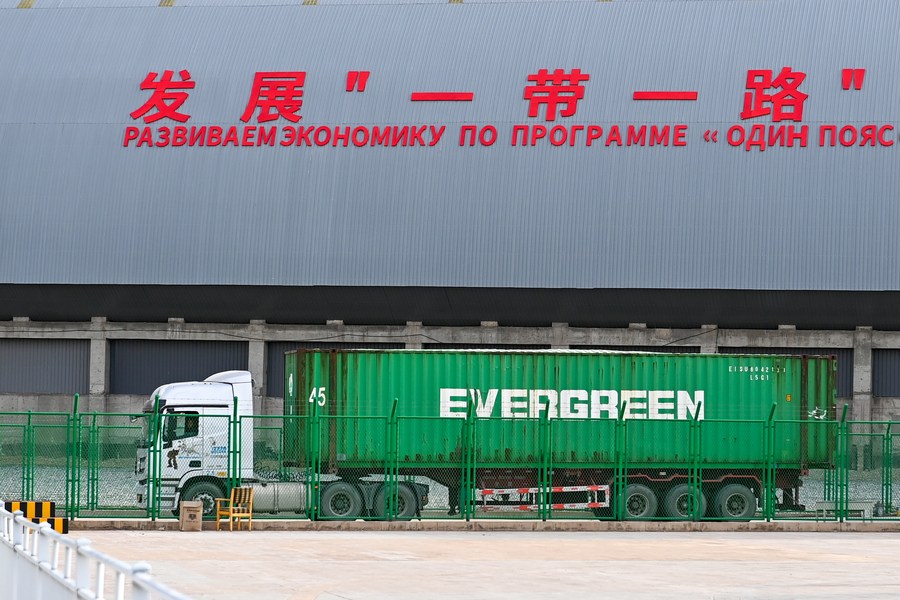China Commits to Market Opening Amid Global Protectionist Trends

China’s high-quality development strategy is expected to benefit other developing countries, including the least developed ones.
Amid a complex international and domestic landscape, the highly anticipated third plenary session of the 20th Central Committee of the Communist Party of China (CPC) took place in Beijing last week. Since Deng Xiaoping’s historic launch of the reform and opening up in 1978, which heralded China’s economic miracle, third plenums have repeatedly delivered defining decisions for the nation’s modernization drive. Similarly, the consensus built last week, reflecting the Party’s continued commitment to deeper reforms, will provide strategic guidance for the next five years, leading up to the 80th anniversary of the People’s Republic of China in 2029.
The CPC National Congress, held every five years, elects a Central Committee to lead the Party and make key decisions. During its five-year term, the Central Committee typically meets seven times. These plenums include the first, second, sixth, and seventh sessions — held closer to the beginning and end of its tenure — which usually focus on leadership adjustments and Party building. In contrast, the third plenum typically sets new governance goals, while the fourth and fifth plenums focus on implementing these goals through specific policies and strategies.
Last Friday, officials held a press conference to explain the guiding principles and outcomes of the plenum. The key result from the session, was a reform resolution outlining over 300 changes to various systems, mechanisms and institutions. These measures aim to advance the development of a high-standard socialist market economy in all respects by 2035. This is expected to be achieved by optimizing the means of production, making them more efficient.
For the next five years, China will focus on innovation to accelerate the development of new quality productive forces, necessitating a fairer and more dynamic market environment for resource distribution. It also prioritizes creating a low-carbon circular economy and a favorable environment for private enterprises and investment while discouraging concentration of capital and monopoly formation. Indeed, the tasks laid out in the reform resolution cover a wide range of sectors, from the economy and national security to people’s well-being, whole-process people’s democracy, and environmental conservation.

The reform resolution also prioritizes promoting integrated urban-rural development and striving for greater social integration. The plan aims to reinforce a unified national market by connecting rural-urban land markets, integrating technology and data markets, and establishing a unified national electricity market. Such measures are expected to optimize the allocation of production factors, including labor, capital, land, knowledge, technology, management and data. The objective is to make these resources more effective, efficient and dynamic, leading to better overall performance.
The communique conveys an overarching message. It emphasizes China’s continued commitment to deepening reforms as the country seeks to basically achieve socialist modernization by 2035.To realize its national rejuvenation through Chinese modernization, China plans to implement a long-term, high-quality development strategy. This strategy entails deeper structural reforms, including regional opening up, to enhance China’s foreign trade, investments, and technology transfers, both incoming and outgoing.
In the long run, China will strive for people’s well-being through a high-quality development strategy. This strategy promises to further improve distribution systems and employment. It also aims to enhance policy support for childbirth to create a more birth-friendly society. Moreover, promoting elder care has once again been underlined as a priority.
Today, Western industrialized countries, once the original proponents of free markets, are now turning to protectionist policies. They blame China for “overcapacity,” even as China has become the world leader in promoting the free flow of commodities and services. Despite these accusations, the third plenum reiterates China’s commitment to continued opening up. It promises to create opportunities beyond China’s borders to address the global post-pandemic economic downturn. This commitment also aims to herald a new type of international relations for the 21st century. China’s focus on people’s well-being drives this approach. The country’s high-quality development strategy is expected to benefit other developing countries, including the least developed ones.
Swaran Singh is a professor of international relations at Jawaharlal Nehru University in New Delhi.
 Facebook
Facebook
 Twitter
Twitter
 Linkedin
Linkedin
 Google +
Google +










